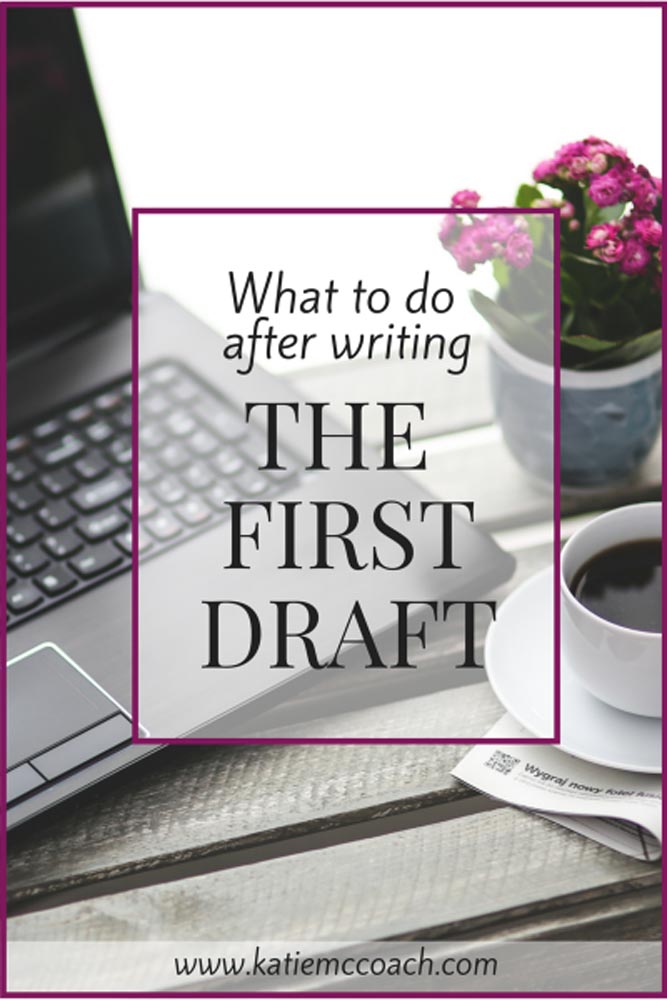 Your fingers hurt. Your eyes burn. You haven’t had anything to drink except coffee for the past few days, weeks, year. You are pretty sure you haven’t slept a full night without dreaming about characters and plot lines. You are certain you will never type again.
Your fingers hurt. Your eyes burn. You haven’t had anything to drink except coffee for the past few days, weeks, year. You are pretty sure you haven’t slept a full night without dreaming about characters and plot lines. You are certain you will never type again.
Because you finally finished writing the first draft of your novel. Phew!
No matter how many times an author finishes the first draft of a novel, they know this is only the beginning of the writing process. So what do you even do after you write that first draft? What comes next? Where do you even begin the process of revising, rewriting, sharing, and more?
Here are ten suggestions that will help you manage that first draft:
- Be proud of yourself! What you did was amazing and you’ve proven to yourself you have it in you, whether this is your first novel or tenth – every time you finish an entire manuscript you have the right to be proud of yourself.
- Save a copy! I don’t mean saving only one copy on your computer – I mean put that baby on a flash drive, and another flash drive, email it to yourself, upload it to Dropbox, Google Drive, and more. Anything can happen; don’t let computer issues take those 50k+ words from you.
- Put it away! Do not look at your book, open it, read it, send it to anyone, etc. Put that thing away and forget about it for at least a couple weeks. I suggest a month or two, but I know how antsy this process can be. Stephen King, in his memoir On Writing suggests six weeks at minimum. Either way, be sure you’ve at least given yourself and your first draft distance so when you come back to it again you have a fresh set of eyes to begin the rest of the exploration process.
- Keep writing! Can you even imagine writing again after all of that? But you should. Not the book you just finished, but something else, anything else. Blog, journal, flash fiction, creative nonfiction essays, 300 word writing prompts – anything. Just keep at it – you will be much more confident approaching your rewrites if you keep up your craft.
- Read your story out loud! I go into detail about this on a past blog post, but this is a very important step. I recently did this with my own work and was blown away at not just sentence flow that needed work, but also I found my own interest waning in certain sections. This is a great way to tell what is working and what needs some fine-tuning.
- Read your MS slowly and critically! It’s easy as the author of your work to skim sentences because you know what’s next, but I encourage you to read the MS in full slowly and carefully. Really take your time and be sure you are reading every word, every dialogue section, and look at your work with a critical eye. This is another insurance that you are catching all the errors you can before sending to an editor.
- The Shrunken manuscript! I read this on a Write to Done guest blog. The idea is to reduce the font size and white space of your MS so you have each chapter fitting on 1-2 pages, then you print the entire thing out so your 200 page MS is now 30 pages, then lay the 30 pages out on the floor in front of you. This way you can see all the chapters before you and begin to notice character patterns, plot points, etc.
- Get a critique! This can be with an editor, beta readers, writing group, etc. This should be done once you think you found all the “holes” in your MS and now you need another pair of eyes. This will lead to more rewrites, so mentally prepare for this, but keep in mind you are getting closer to that final product!
- Here are a few related posts on critiques and rewriting:
- Figure out your next steps – meaning your goals! What do you want to do with this? Hold on to it for safekeeping? Self-publish? Get an agent? Once you figure that out, start doing the research to get there. Knowing your next steps will help as you review your manuscript; it may change the way you look at it during the revision period.
- Hire an editorial team! Hiring a developmental editor, copyeditor, and proofreader will make your manuscript stand out and will help develop your product. Who you hire ultimately depends on how much you want to put into your product to make it the best it can be, and what you plan to do with your book (see #9). For more information on finding an editorial team right for you visit the-efa.org.
What else would you add to this list? What do you do after writing your first draft?
KATIE McCOACH is a developmental book editor at KM Editorial working with authors of all levels to help them create their best story possible. Katie is a member of Romance Writers of America and the Editorial Freelancers Association. She has had essays published in TrainWrite and Kalliope and is currently writing a contemporary romance novel. For advice on editing, writing, and publishing visit her blog at https://katiemccoach.com/blog and be sure to also follow her on Twitter @KatieMcCoach.


 Download your free copy of these 8 tried-and-true strategies to stop self-doubt and imposter syndrome as a writer. And, build the power to resist it in the future.
Download your free copy of these 8 tried-and-true strategies to stop self-doubt and imposter syndrome as a writer. And, build the power to resist it in the future.
Yes, getting that second pair of eyeballs to find the jaw-dropping errors is hard to do, but vital. Drop the ego and see what real human beings think about your writing. I’ve always learned something useful from critiques.
Mike,
Thanks for sharing! Yeah, it can be hard on the ego, but I think for the most part writers will be SO much happier with the final product after they get that second or third or fourth pair of eyes on the ms.
Better then learning it all in the public reviews that affect the book ranking, right?
Thanks for stopping by!
Point no. 6.
On it.
Good to hear! Keep up the great work.